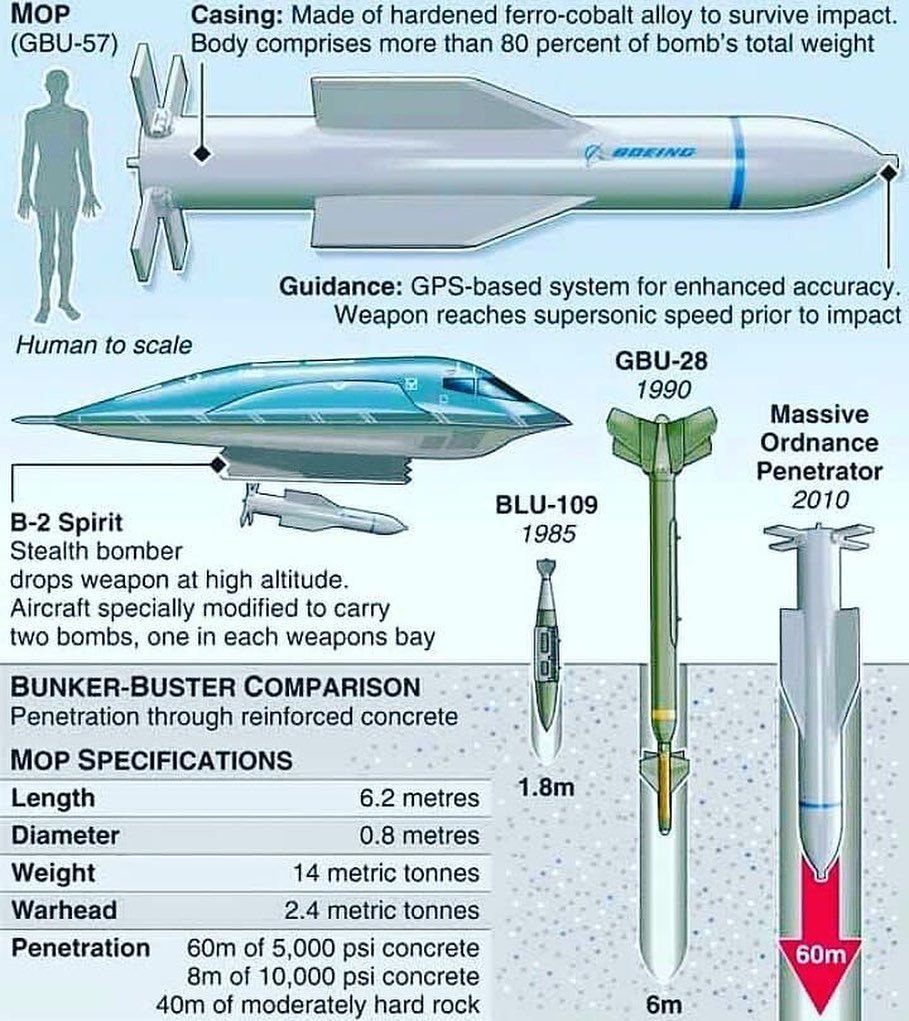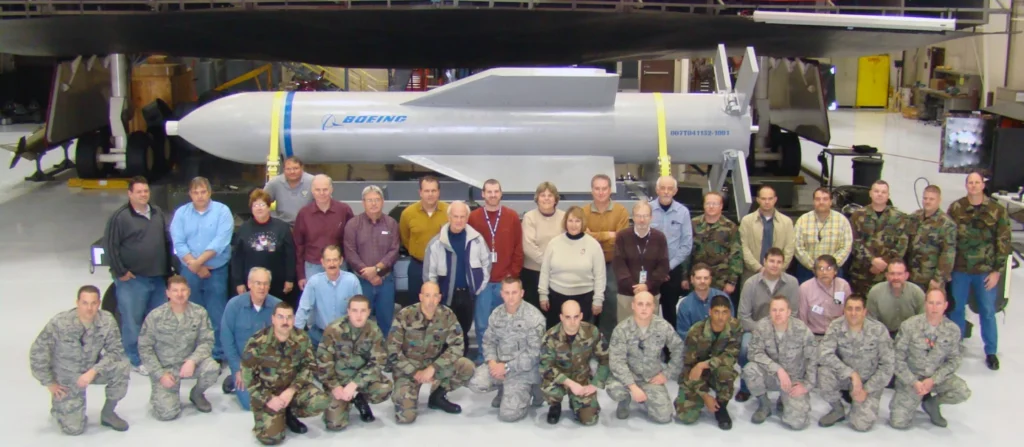
guided bomb. It’s designed to penetrate tough, buried targets and is the most powerful non-nuclear bunker-busting bomb in the US arsenal. Currently, it can only be launched from B-2 and B-52 bombers, and later from the B-21.
Introduction and Development History of the GBU-57 MOP:
As a heavy-duty penetrator bomb, the GBU-57 MOP (Massive Ordnance Penetrator) can target and destroy heavily fortified underground facilities like bunkers, command centers, and weapons depots. Designed for daytime or nighttime attacks on targets deep underground, as well as for deterring enemies with buried infrastructure, the bomb is built for planned strikes.
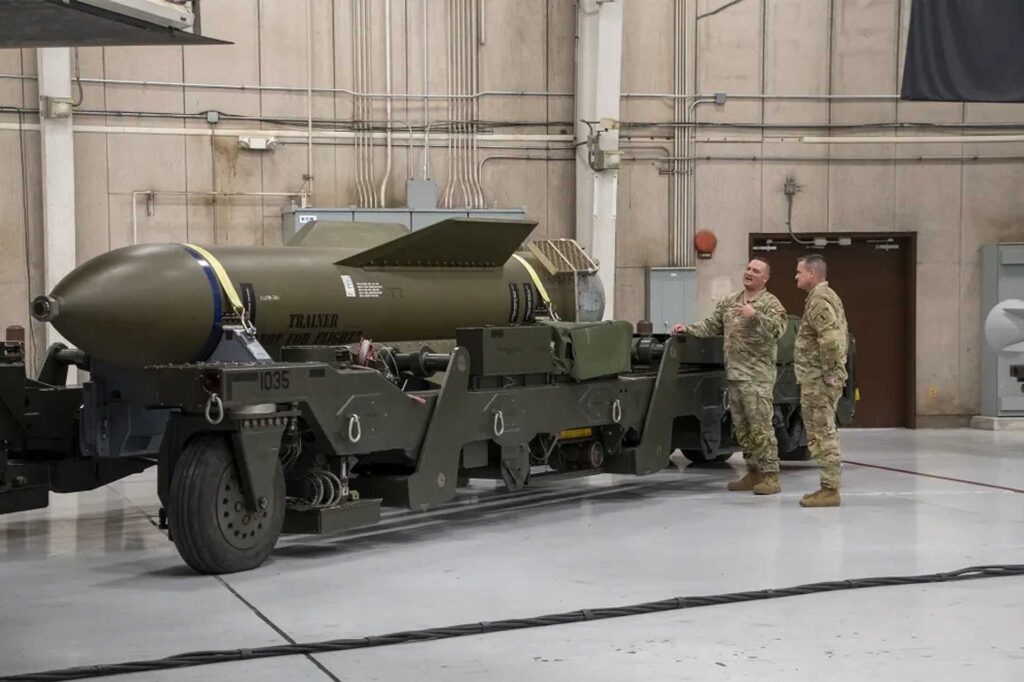
The GBU-57 MOP project started in the early 2000s, a joint effort by Northrop Grumman and Lockheed Martin. However, due to financial and technical hurdles, the initial attempt was halted. After the US invasion of Iraq in 2003, an analysis of bunker-busting bombs used showed they lacked the penetration power to take out fortified targets.
This sparked renewed interest in developing a larger bunker-busting bomb, and the MOP project was launched by the Defense Threat Reduction Agency (DTRA) to meet a long-standing Air Force need. The concept of “Big BLU” – large penetrating and explosive bombs like MOP and MOAB – was also proposed.
In the end, Boeing won the contract to design and produce the bomb.
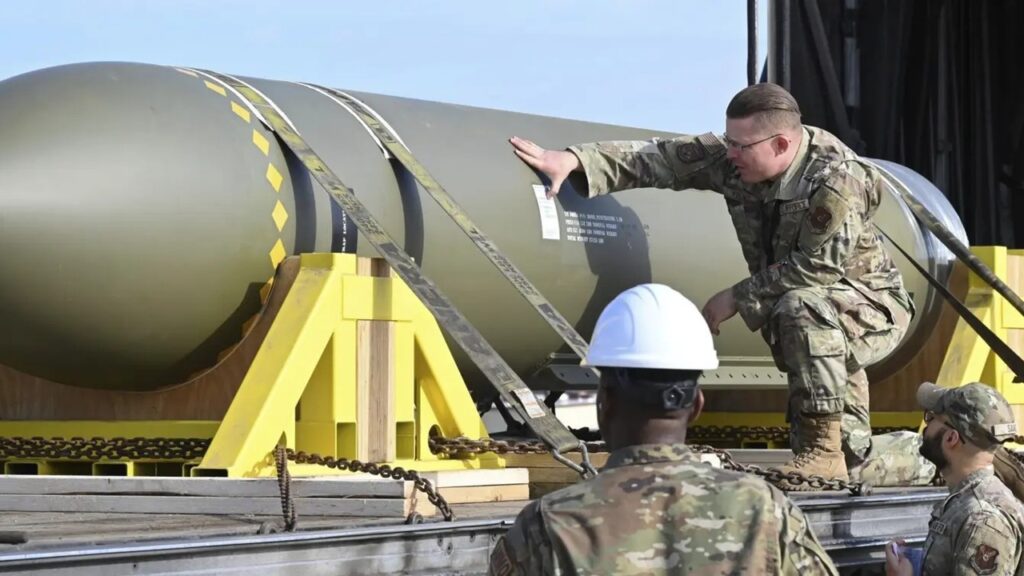
Boeing and US Army weapons specialists stand in front of a mock-up of the MOP bomb at Whiteman Air Force Base
The first static detonation test of the bomb was conducted in 2007 at the White Sands Missile Range. Flight tests of the weapon were conducted from 2008 to 2010, including launches from B-52 and B-2 bombers. In February 2010, the project was transferred to the Air Force, and the first deliveries of operational units of the bomb began in September 2011.
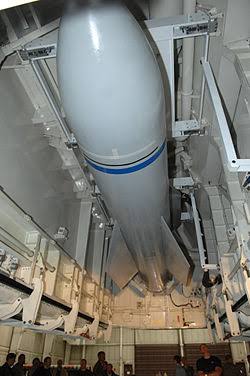
Weapon specialists gather in front of a mock up of the Massive Ordnance Penetrator and the B-2 weapons load trainer Dec. 18 at Whitman Air Force Base, Mo. The MOP is approximately 20.5 feet long, with a 31.5-inch diameter and a total weight of slightly less than 30,000 pounds. The weapon will carry over 5,300 pounds of explosive material and will deliver more than 10 times the explosive power of its predecessor, the BLU-109. It is designed to penetrate up to 200 feet underground before exploding. (U.S. Air Force photo)
Technical Specifications of the GBU-57 MOP Bomb:
The estimated weight of the GBU-57 Massive Ordnance Penetrator (MOP) is between 12,300 and 13,600 kilograms, depending on various sources. The bomb measures approximately 6.2 meters in length and about 0.8 meters in diameter. To put this into perspective, its weight is comparable to that of two adult African elephants, highlighting its significant scale.
The warhead of this bomb is composed of a mixture of AFX-757 and PBXN-114 explosives. The total weight of the warhead ranges from 2,400 to 2,600 kilograms, which includes around 2,080 kilograms of AFX-757 and 341 kilograms of PBXN-114. The body of the warhead is made from a high-performance steel alloy, designed to maintain its integrity upon impact. This construction enables the bomb to deliver a substantial explosive payload while preserving the penetrator’s structure during impact. The bomb’s considerable weight and specialized alloy are crucial to its penetration capability, much like driving a steel nail into rock. Most of the bomb’s weight resides in its body.
The GBU-57 MOP is estimated to penetrate approximately 60 meters of reinforced concrete with a strength of 5,000 PSI. It can also penetrate about 40 meters of relatively hard rock and around 8 meters of reinforced concrete with a strength of 10,000 PSI. It is important to note that the reported penetration capabilities of 60 meters are based on preliminary information and prototypes of the bomb, and there is currently no precise information available regarding the ultimate penetration capacity of the latest model.
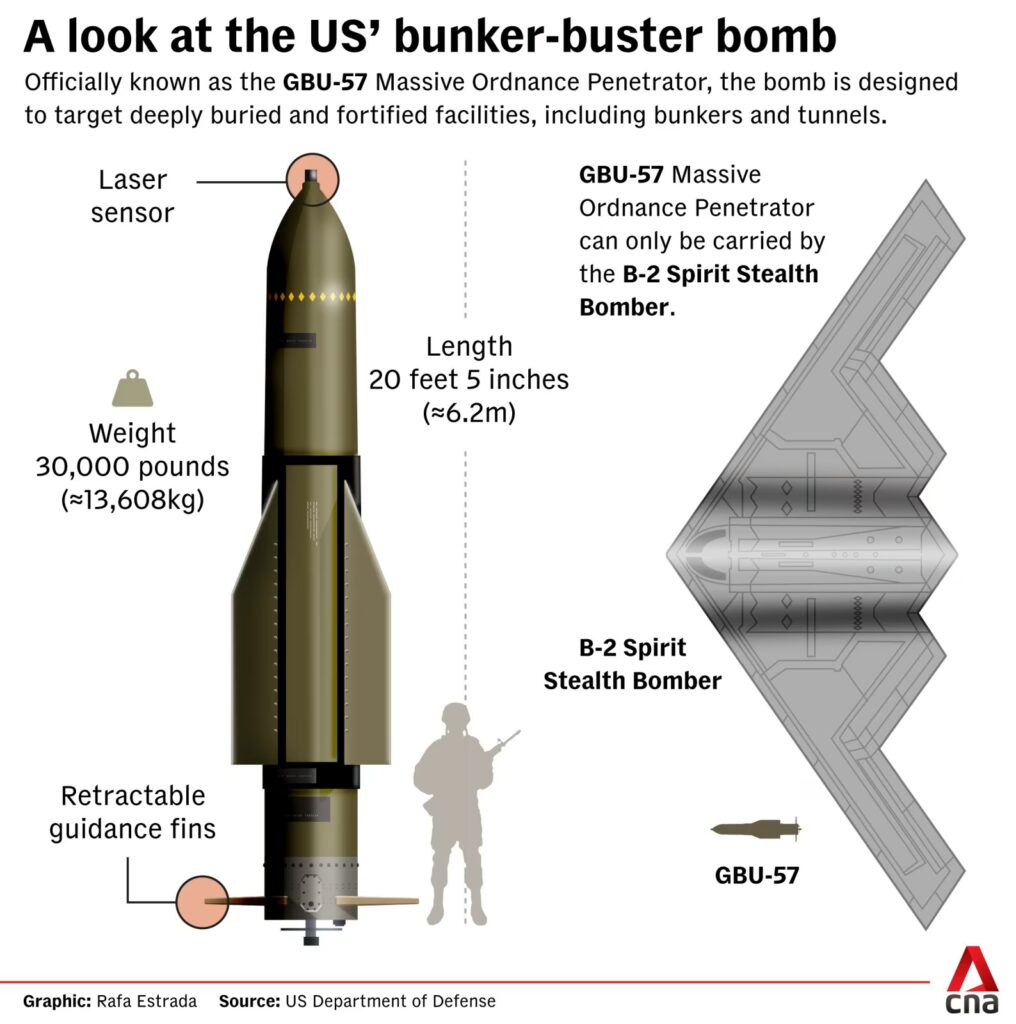
Comparison of penetration of the MOP bomb (possibly a prototype) with the BLU-109 and GBU-28 bombs
The GBU-57 Massive Ordnance Penetrator (MOP) is a precision-guided munition that utilizes a GPS/INS (Global Positioning System/Inertial Navigation System) for enhanced targeting accuracy, achieving precision within a few meters. The bomb features four fixed trapezoidal wings along its midsection and four lattice fins at its tail, which help adjust its trajectory during flight.
Equipped with a smart fuze (LPSF), the GBU-57 MOP can modify its detonation timing based on the depth and configuration of the underground target. It incorporates void-sensing fuzes that trigger detonation if a large cavity is detected within the bunker. Additionally, the weapon includes a delay fuse, allowing the warhead to survive the initial impact upon penetrating the target before it detonates.
In comparison to BLU-109, the MOP bomb possesses over ten times the explosive power and significantly greater penetration capabilities. The BLU-109 weighs only 910 kg and has a much shallower penetration depth.
